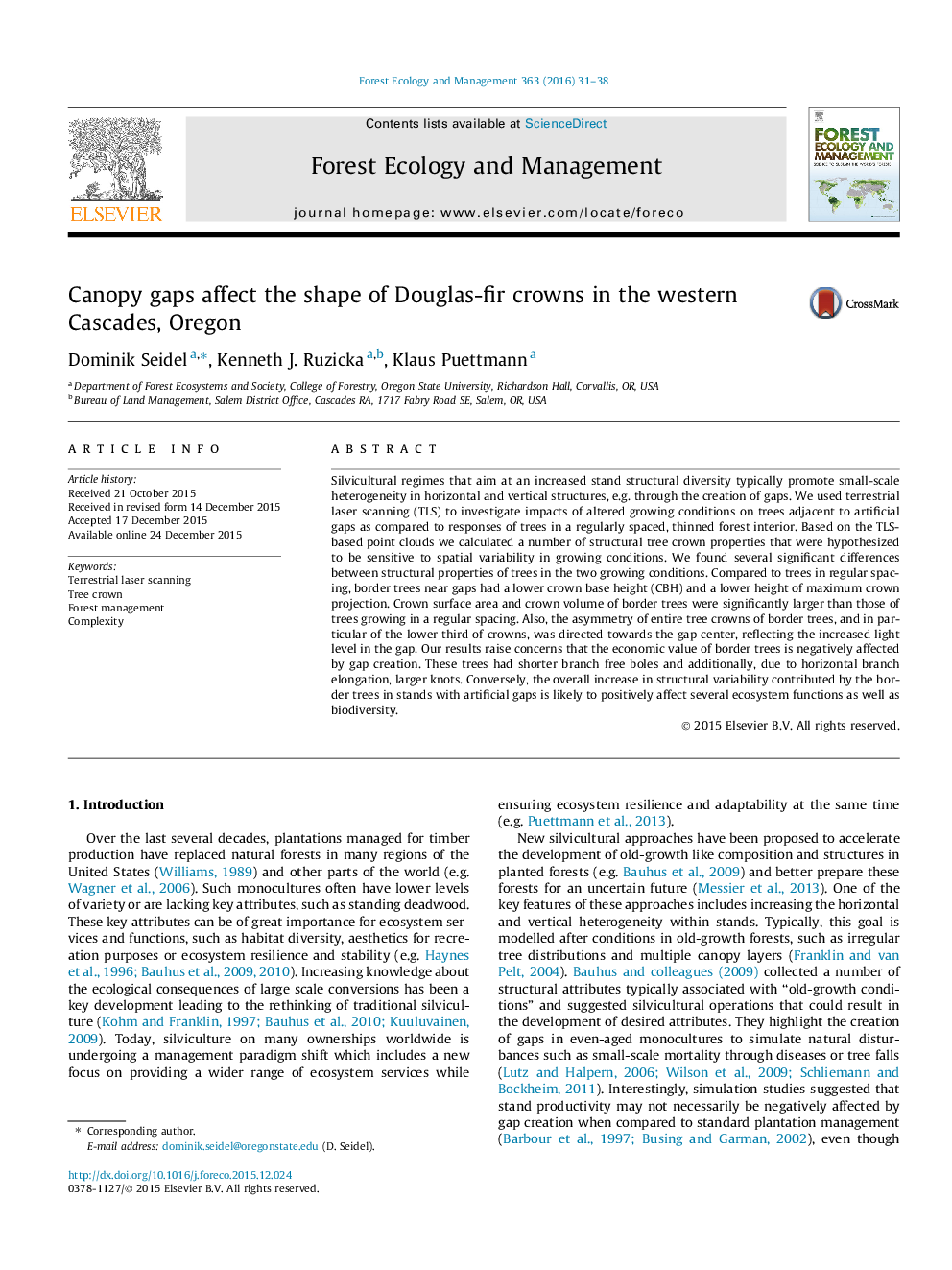| Article ID | Journal | Published Year | Pages | File Type |
|---|---|---|---|---|
| 86008 | Forest Ecology and Management | 2016 | 8 Pages |
•Artificial gaps affect the structure of trees directly adjacent to the gap.•Trees at the gap developed a more bottom-loaded crown architecture.•Trees at the gap show asymmetric growth towards the gap center.•The economic value of the border trees was potentially negatively affected.
Silvicultural regimes that aim at an increased stand structural diversity typically promote small-scale heterogeneity in horizontal and vertical structures, e.g. through the creation of gaps. We used terrestrial laser scanning (TLS) to investigate impacts of altered growing conditions on trees adjacent to artificial gaps as compared to responses of trees in a regularly spaced, thinned forest interior. Based on the TLS-based point clouds we calculated a number of structural tree crown properties that were hypothesized to be sensitive to spatial variability in growing conditions. We found several significant differences between structural properties of trees in the two growing conditions. Compared to trees in regular spacing, border trees near gaps had a lower crown base height (CBH) and a lower height of maximum crown projection. Crown surface area and crown volume of border trees were significantly larger than those of trees growing in a regular spacing. Also, the asymmetry of entire tree crowns of border trees, and in particular of the lower third of crowns, was directed towards the gap center, reflecting the increased light level in the gap. Our results raise concerns that the economic value of border trees is negatively affected by gap creation. These trees had shorter branch free boles and additionally, due to horizontal branch elongation, larger knots. Conversely, the overall increase in structural variability contributed by the border trees in stands with artificial gaps is likely to positively affect several ecosystem functions as well as biodiversity.
